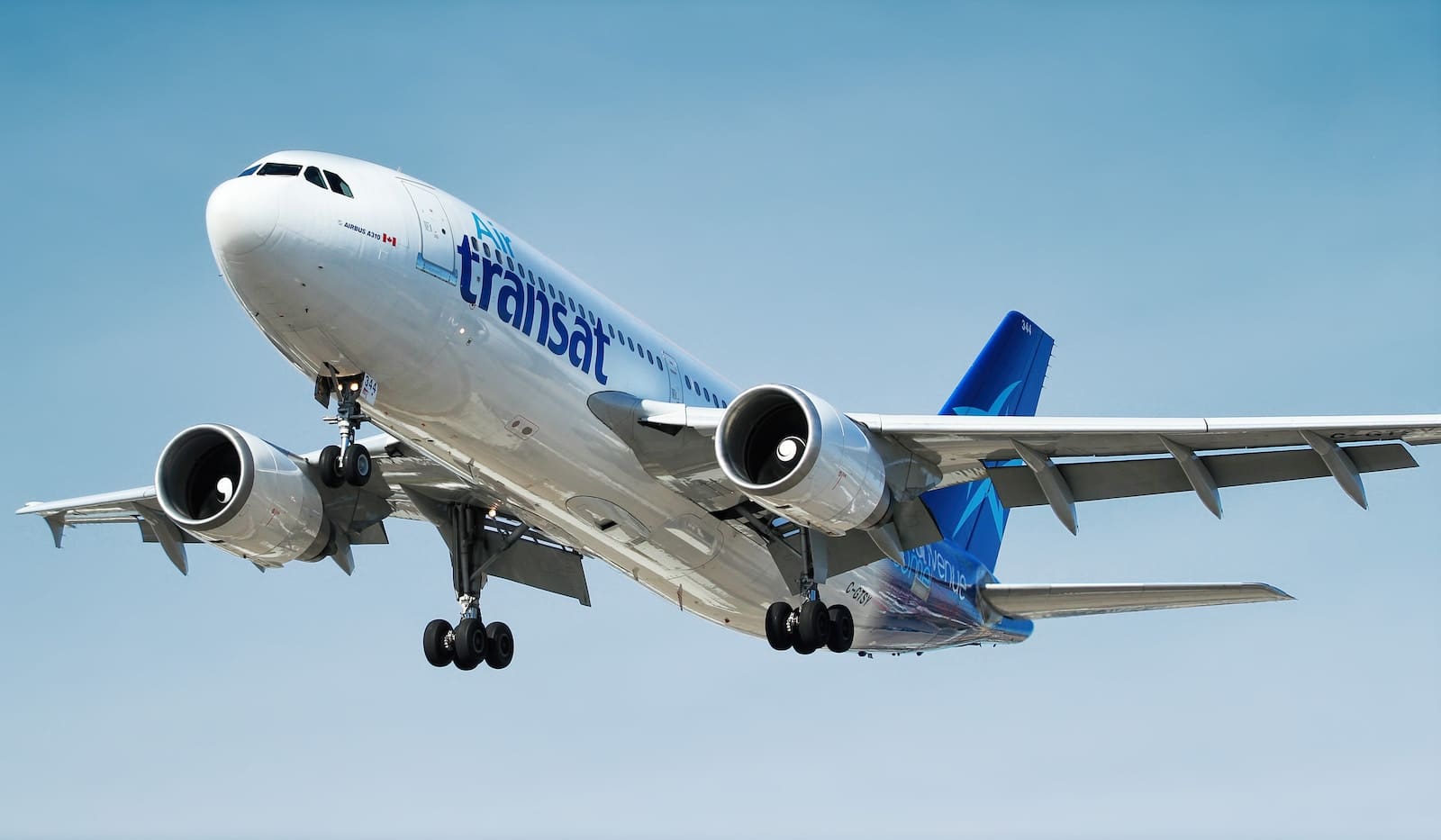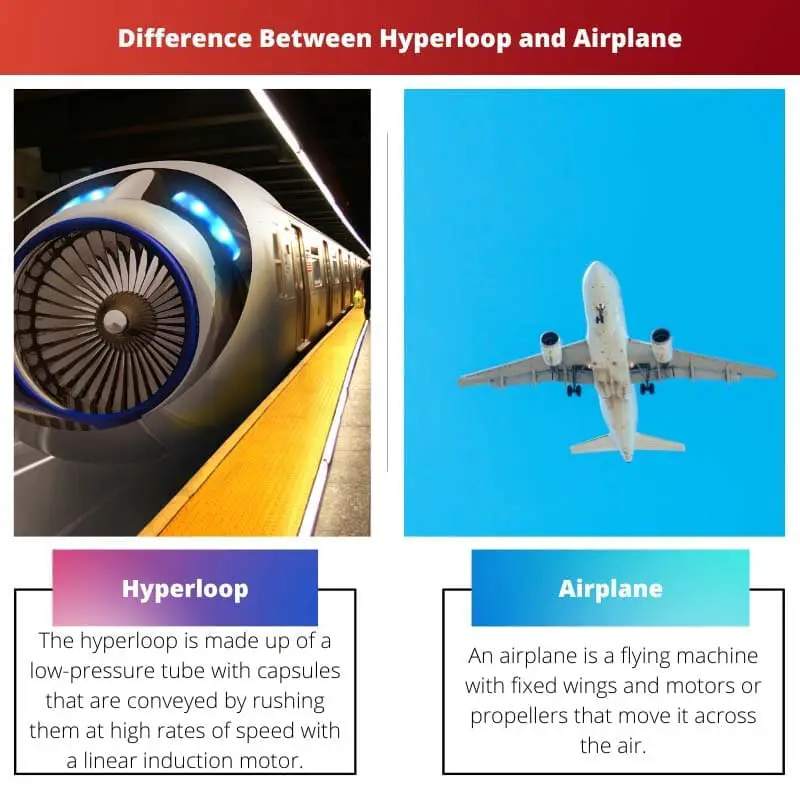The term mode of transportation refers to the many methods by which products or persons are carried from one location to another by land, air, or sea. Existing ways of transportation have many shortcomings.
They are either slow (for example- road and water), overpriced (example-air),, or a blend of the two. In nearly a century, we have not devised a new form of transportation.
Key Takeaways
- Hyperloop is a ground-based, high-speed transportation system that uses magnetic levitation and vacuum tubes, while airplanes are airborne vehicles that rely on aerodynamic lift and propulsion.
- Hyperloop promises faster travel times and greater energy efficiency than airplanes, potentially reducing the environmental impact of transportation.
- Airplanes have a well-established global infrastructure and are currently the primary mode of long-distance travel, whereas hyperloop technology is still developing and tested.
Hyperloop vs Airplane
Hyperloop is a proposed high-speed transportation system that uses vacuum-sealed tubes and magnetic levitation to transport passengers and goods. Aeroplanes are conventional vehicles that use jet propulsion to fly. Hyperloop is faster than aeroplanes and is expected to be more eco-friendly.

The Hyperloop is a novel kind of ground transportation presently being developed by a handful of businesses. It could carry passengers up to 700 miles per hour in flying pods.
The Hyperloop comprises a low-pressure tube with capsules that are conveyed by rushing them at high rates of speed with a linear induction motor.
An aeroplane, commonly known as an aeroplane, is a fixed-wing aircraft driven by force from a jet engine or propeller. Planes are available in various sizes, forms, and wing arrangements.
Aeroplanes are used for various purposes, including leisure, carriage of goods and passengers, military operations, and research.
Comparison Table
| Parameter of comparison | Hyperloop | Airplane |
|---|---|---|
| Definition | An aeroplane is a flying machine with fixed wings and motors or propellers that move it across the air. | Fixed routes and frequent stops. |
| Flexibility | Eight hundred forty passengers per hour, vehicles, and luggage. | Fixed route and non-stop. |
| Capacity | 840 passengers per hour, vehicles, and luggage. | 100-300 passengers per flight and restricted luggage. |
| Terminal size | Medium. | Large. |
| Travel cost | Comparatively cheaper. | Expensive. |
What is Hyperloop?
The Hyperloop technology comprises an aerodynamic capsule that runs within a confined tunnel on a bed of air. With less resistance, the device can achieve speeds of up to 800 MPH.
Musk developed the notion first as a fix to California’s high-speed rail infrastructure. He positioned Hyperloop as a greener and speedier mode of transportation than conventional flying.
Musk believes that the system will be equipped to transport people from San Francisco to Los Angeles in under 30 minutes.
Believers say that Hyperloop might be less expensive and quicker than rail or road transport and less expensive and far less polluting than plane travel. They say it is also faster and cheaper to develop than regular rail.
Consequently, hyperloop can be used to relieve congestion on congested roads, trying to make travel among cities convenient and potentially unlocking significant monetary benefits.
Using low-pressure or vacuum cylinders as part of a transportation system has an ancient history. In 1864, the Crystal Palace pneumatic railway employed air pressure to propel a waggon uphill (and suction to draw it back down) in Victorian south London.
Identical systems, which employ pneumatic tubes to transport letters and deliveries between locations, have been in need since the late 1800s and may still be found in groceries and banks today.
What is Airplane?
An aeroplane is a flying machine with fixed wings and motors or propellers that move it across the air. When travelling great miles, it is most typical to take an aeroplane.
An aeroplane’s fundamental elements are a wing system that keeps it flying, tail structures to stabilize the wings, moveable surfaces to adjust the jet’s attitude in movement, and a power station that will supply the thrust needed to propel the craft through the air. There must be provisions in place to hold the plane while it is at rest on the field, as well as throughout takeoff and landing.
The cockpit is where the pilot uses the instruments and indicators to fly the plane. Most aeroplanes have a covered body to accommodate the crew, passengers, and cargo.
When assessed in terms of deaths per passenger kilometre, air transport is nearly ten times more secure than bus or rail transport. Yet, when considering the fatalities per journey number, air transport is substantially more risky than driving, taking the train, or taking the bus.
Because of this, air travel insurance is comparatively pricey. Fossil-fuel-powered aeroplanes, like all combustion-related activities, discharge soot as well as other pollutants in the air.
Carbon dioxide (CO2) and other greenhouse gases are also created because of it.

Main Differences Between Hyperloop and Airplane
- The Hyperloop comprises a low-pressure tube with capsules that are conveyed by rushing them at high rates of speed with a linear induction motor. On the contrary, an aeroplane is a flying machine with fixed wings and engines or propellers that move it across the air.
- Hyperloop has a fixed route but with frequent stops. The airplane, on the other hand, also has a fixed route but is non-stop.
- Hyperloop can carry 840 passengers per hour, vehicles, and luggage, while airplanes can carry 100-300 passengers per flight and restricted luggage.
- The terminal size required for an airplane is comparatively larger as compared to a hyperloop.
- While airplane travel is quite expensive, the hyperloop is comparatively a cheaper option.

- https://link.springer.com/chapter/10.1007/978-3-319-96074-6_23
- https://www.sciencedirect.com/science/article/pii/S0167610521000775

This article is really interesting. The differences between the Hyperloop and airplanes are quite fascinating. It would be interesting to see the development of the Hyperloop technology and how it stands against well-established air travel systems.
I agree! The prospect of faster, more efficient transportation with less impact on the environment is intriguing. It’s definitely something to keep an eye on!
The concept of the Hyperloop is indeed revolutionary. It challenges the norms of conventional transportation and presents a promising alternative. However, its development and practical application need to be critically evaluated to gauge its true potential.
The safety and environmental considerations associated with air travel are crucial aspects to consider. While the Hyperloop holds promise in terms of speed and efficiency, addressing these factors will be imperative for its widespread adoption.
I appreciate the comprehensive overview of both Hyperloop and airplane technologies. The comparison table provides a clear distinction between the two modes of transportation, shedding light on their unique attributes.
I find the comparison between Hyperloop and airplanes to be rather enlightening. The potential benefits of the Hyperloop are quite appealing given its focus on energy efficiency and reduced environmental impact.
Absolutely! The innovative design of the Hyperloop seems to address several concerns associated with traditional air travel. If executed properly, it could significantly transform the future of transportation.
The historical context of transportation methods is an interesting addition to the article. It’s intriguing to see how technological advancements have shaped the evolution of transportation systems over time.
While the Hyperloop presents an enticing vision for the future of transportation, the established infrastructure and reliability of airplanes cannot be overlooked. It’s essential to weigh the practical implications of transitioning to a new transportation system.